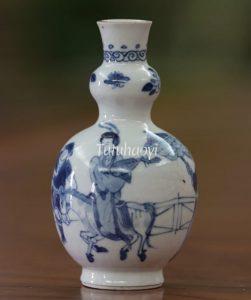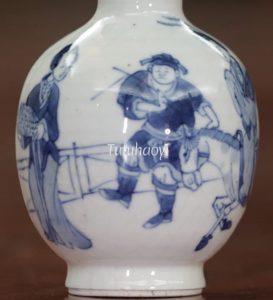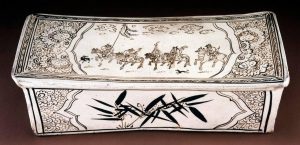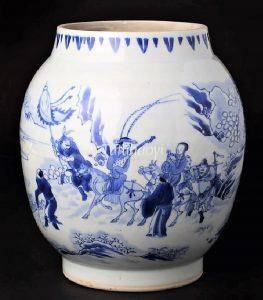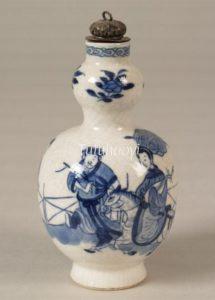Lady Wang Zhaojun Going out of the Frontier Pass
昭君出塞
© Tutuhaoyi.com owns the copyright of the description content for the images attached. Quoting all or part of the description content on this page is permitted ONLY IF ‘Tutuhaoyi.com’ is clearly acknowledged anywhere your quote is produced unless stated otherwise. (本页描述内容版权归Tutuhaoyi.com所有,转发或引用需注明 “Tutuhaoyi.com”, 侵权必究, 已注开源信息的条目除外。)
Wang Zhaojun (王昭君, c.52 – c.15 BCE) was one of the court ladies in the harem of Emperor Yuan of the Western Han dynasty (汉元帝, 206 BCE – 8 CE). It was not possible for the emperor to meet every one of the three-thousand concubines, so he had a court painter paint their pictures to facilitate his selection process. Every lady tried very hard to win the painter’s favour so that the painter can represent them in a more flattering image. But Lady Wang Zhaojun was confident in her own beauty. She didn’t want to bribe the painter. As a result, the painter didn’t show her beauty in the portrait and the emperor never noticed her.
During that time, some nomadic groups from the western region invaded China quite often, so the emperor wanted to make peace with them by marrying some of his ladies to the chieftains. On one occasion, Lady Wang was chosen. When Lady Wang was unveiled at the court, her beauty stunned everybody present and the emperor was deeply regretted for not knowing her earlier. However, it was too late for the emperor to keep her and he had to let her go.
The journey to the new home was long and arduous so Lady Wang was given a pipa (琵琶), a Chinese musical instrument, to pass time and the pipa became her signature attribute. Because of her marriage with the Xiongnu (匈奴) chieftain, the region remained peaceful for decades. Lady Wang Zhaojun was credited as one of the four most beautiful women in the whole Chinese history.
More interesting reading:
Dr Yibin Ni explains in his blog the provenance of the porcelain bottle in Fig 1.
Fig 1-2: porcelain bottle, Qing dynasty (1644-1911), courtesy of Nieuwenhuys collection, donated to the Shanghai Museum
Fig 3: Cizhou type pillow, Jin dynasty (1115-1234), courtesy of the Trustees of the British Museum
Fig 4: porcelain pot, Ming dynasty (1368-1644), courtesy of Princessehof Museum, The Netherlands
Fig 5-6: blue-and-white jar, Shunzhi period (1644-61), Qing dynasty, courtesy of Ashmolean Museum, University of Oxford, Accession no. EA1978.943
Fig 7: porcelain bottle, Qing dynasty (1644-1911), courtesy of Princessehof Museum, The Netherlands
